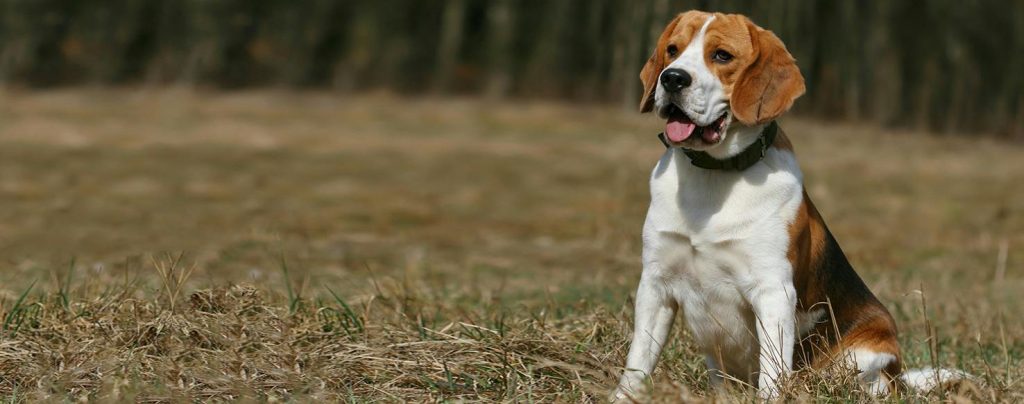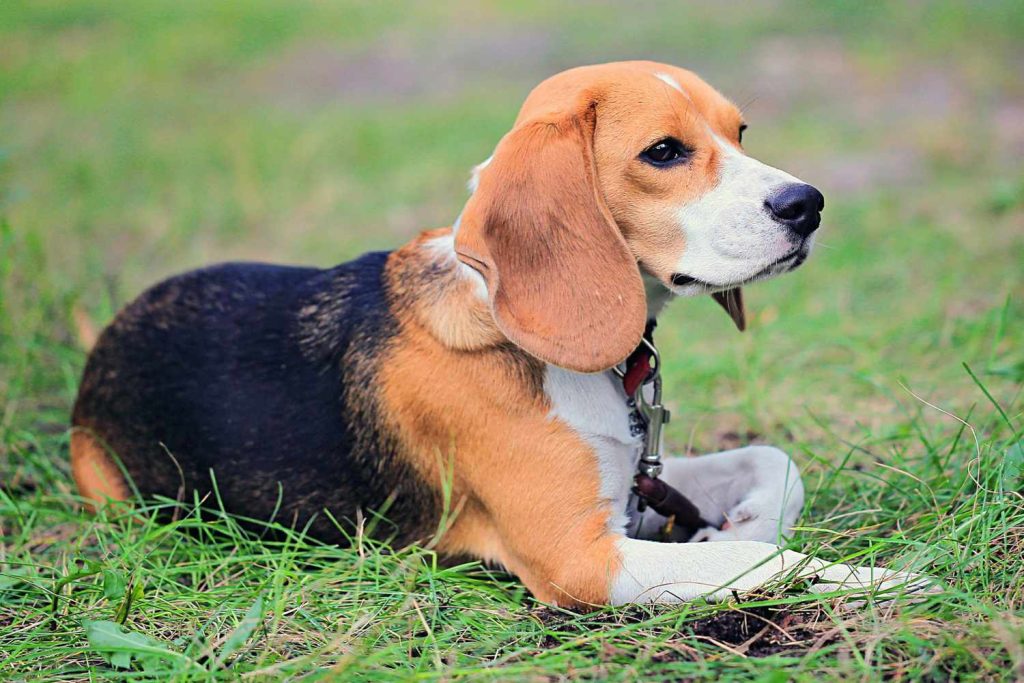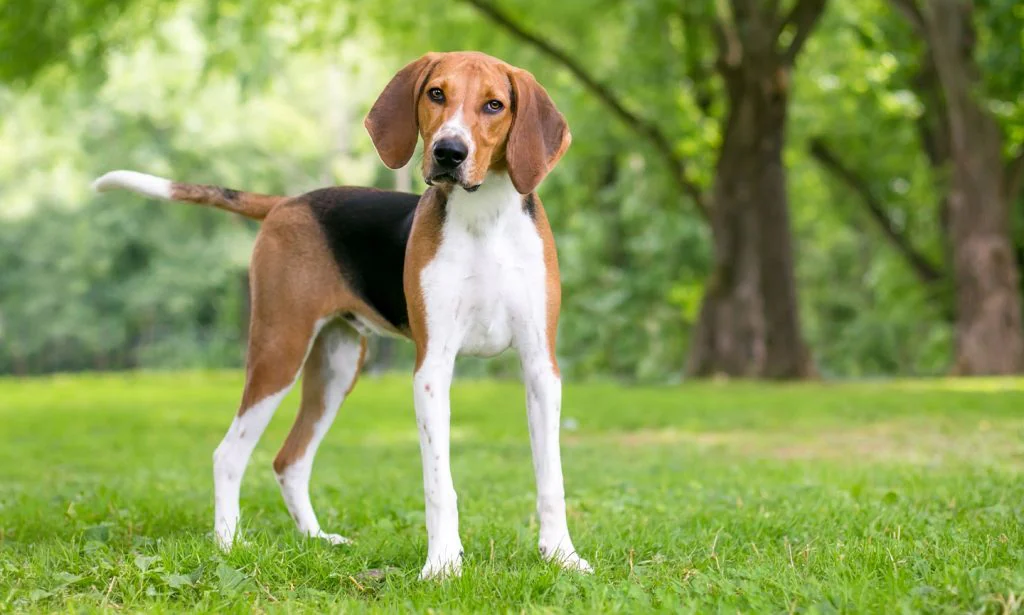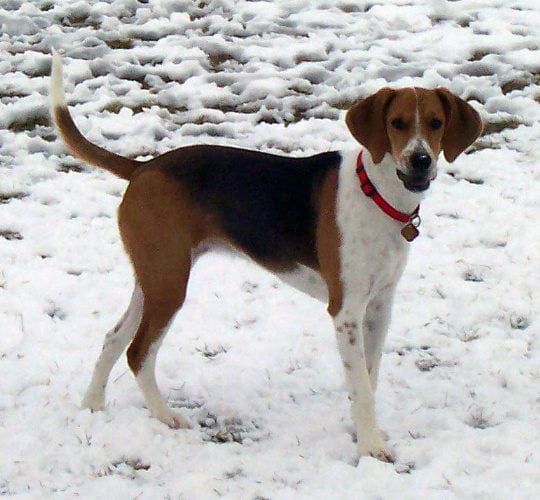Are you currently considering getting a Harrier breed dog as a pet? If so, you may be interested to know that this breed is known for their boundless energy, friendly demeanor, and excellent hunting skills. Originally bred in England for hunting hares, these dogs have a strong prey drive and require plenty of exercise and mental stimulation to stay happy and healthy. While they can be challenging to train due to their independent nature, Harriers make loyal and affectionate companions for families who are willing to provide them with the attention and exercise they need.
Breed Category: Hound
Country of Origin: England
Average Size:45-50 cm
Average Weight:19-21 kg
Average Life Span: 12-15 years
Grooming Requirements: Low
Exercise Requirements:High
History and Origin
The Harrier is a unique and iconic aircraft that has been in service with the British military for over 50 years. It is a vertical takeoff and landing (VTOL) aircraft that has the ability to hover, take off, and land like a helicopter, but can also fly like a conventional fixed-wing aircraft. The Harrier has a fascinating history and origin that dates back to the 1950s.
The development of the Harrier began in the early 1950s when the British Ministry of Defence (MoD) issued a requirement for a VTOL aircraft that could operate from small, unprepared airfields. The MoD was looking for an aircraft that could provide close air support to ground troops in a variety of environments, including jungle, desert, and mountainous terrain.
In response to this requirement, the British aircraft manufacturer Hawker Siddeley developed the P.1127, a prototype VTOL aircraft that first flew in 1960. The P.1127 was powered by a single Bristol Siddeley Pegasus engine, which provided the thrust necessary for vertical takeoff and landing. The P.1127 was later developed into the Kestrel, which was a modified version of the P.1127 that was used for testing and evaluation by the British military.
In 1966, the Royal Air Force (RAF) ordered the first production version of the Harrier, which was designated the GR.1. The Harrier GR.1 was a ground-attack aircraft that was designed to provide close air support to ground troops. It was armed with a variety of weapons, including rockets, bombs, and machine guns. The Harrier GR.1 was also equipped with a radar system that allowed it to operate in all weather conditions.
The Harrier GR.1 saw its first combat action in 1982 during the Falklands War. The Harrier was used to provide close air support to British ground troops and played a key role in the success of the British military campaign. The Harrier was also used by the United States Marine Corps (USMC) during the Gulf War in 1991 and the Iraq War in 2003.
Over the years, the Harrier has undergone several upgrades and modifications. The Harrier GR.3 was introduced in 1976 and featured an improved engine and avionics system

Size and Breed Category
The Harrier is a medium-sized breed of dog that falls under the hound category. They are known for their athletic build and keen sense of smell, which makes them excellent hunting companions. Harriers typically weigh between 45-65 pounds and stand at a height of 18-22 inches at the shoulder. They have a short, dense coat that comes in a variety of colors, including black and tan, lemon and white, and red and white. Their ears are long and droopy, and their eyes are large and expressive. Harriers are known for their friendly and outgoing personalities, making them great family pets.
As a hound breed, Harriers have a strong prey drive and require plenty of exercise to keep them happy and healthy. They were originally bred for hunting hares and foxes, and their athleticism and endurance make them well-suited for this task. Harriers are also known for their excellent sense of smell, which makes them great at tracking scents. They are intelligent dogs that require consistent training and socialization to prevent them from becoming bored or destructive. Harriers are generally good with children and other pets, but their strong prey drive means they may not be suitable for households with small animals such as rabbits or guinea pigs.
Fur Length and Colour
The fur of the Harrier is typically short and dense, with a smooth texture that is pleasing to the touch. The colour of the fur can vary depending on the individual, but it is usually a combination of brown, black, and white. The brown fur is often the dominant colour, covering most of the body, while the black and white fur is usually found on the face, chest, and legs. The white fur is particularly striking, as it creates a beautiful contrast against the darker colours. Overall, the fur of the Harrier is both practical and aesthetically pleasing, providing warmth and protection while also being visually appealing.
In addition to the standard colouration, some Harriers may also have unique markings or patterns on their fur. For example, some individuals may have spots or stripes on their fur, while others may have a more uniform colouration. These variations in fur pattern can make each Harrier unique and easily identifiable. Additionally, the length of the fur may vary slightly between individuals, with some having slightly longer or shorter fur than others. However, regardless of these minor differences, all Harriers have fur that is well-suited to their active and energetic lifestyle, providing both comfort and protection as they run and play.
Termperament and Trainability
Harriers are known for their lively and outgoing temperament. They are friendly and affectionate dogs that enjoy being around people and other animals. They have a strong hunting instinct and love to chase after small prey, so it is important to keep them on a leash or in a secure area when outside. Harriers are also known for their vocal nature and will often bark or howl when excited or bored. They require regular exercise and mental stimulation to prevent destructive behavior. With proper training and socialization, Harriers can make excellent family pets.
Harriers are intelligent and eager to please, making them highly trainable. They respond well to positive reinforcement techniques such as praise and treats. However, they can be stubborn at times and may require patience and consistency from their owners. Harriers excel in activities such as agility, obedience, and tracking. They have a strong sense of smell and are often used in search and rescue operations. Harriers are also known for their endurance and can handle long periods of physical activity. Overall, Harriers are a versatile breed that can adapt to a variety of lifestyles with the right training and care.

Known Health Conditions
Harriers are a breed of dog that are known to be prone to certain health conditions. One of the most common health issues that Harriers face is hip dysplasia. This is a condition where the hip joint does not develop properly, leading to pain and discomfort for the dog. Harriers are also at risk of developing eye problems such as cataracts and glaucoma. These conditions can cause vision loss and may require surgery to correct. Additionally, Harriers may be prone to skin allergies and ear infections, which can be uncomfortable and require ongoing treatment.
Another health concern for Harriers is obesity. These dogs have a tendency to gain weight easily, which can lead to a range of health problems such as joint pain, diabetes, and heart disease. It is important for Harrier owners to monitor their dog’s diet and exercise levels to ensure they maintain a healthy weight. Harriers may also be at risk of developing certain types of cancer, such as lymphoma and mast cell tumors. Regular check-ups with a veterinarian can help to detect these conditions early and improve the chances of successful treatment.

Openness to Strangers
Harriers are known for their friendly and outgoing nature towards strangers. They are a breed that loves to socialize and make new friends, whether it be with humans or other dogs. Their open and welcoming attitude makes them a popular choice for families with children, as they are patient and gentle with little ones. Harriers are also known to be quite vocal, often baying and howling to greet visitors or express their excitement. This can make them great watchdogs, as they will alert their owners to any unfamiliar presence. Overall, the Harrier’s openness to strangers makes them a beloved and sociable companion.
In addition to their friendly nature, Harriers are also known for their adventurous spirit. They love to explore and are always up for a new adventure, whether it be a hike in the countryside or a trip to the beach. Their high energy levels make them great companions for active individuals or families who enjoy spending time outdoors. Harriers are also known for their intelligence and trainability, which makes them great candidates for activities such as agility or obedience competitions. Their love of adventure and willingness to try new things makes them a fun and exciting breed to own.

Playfulness Level
The Harrier is a highly energetic and playful breed of dog that requires plenty of exercise and mental stimulation to keep them happy and healthy. With their boundless energy and love of play, Harriers are well-suited to active families who enjoy spending time outdoors. Whether it’s playing fetch in the park, going for a long hike, or participating in agility training, Harriers thrive on physical activity and enjoy being part of the action.
In addition to their love of physical play, Harriers are also known for their playful personalities and sense of humor. They are often described as being mischievous and fun-loving, with a keen sense of curiosity and a love of exploration. Harriers are social animals who enjoy spending time with their human families and are known for their affectionate and loyal nature. Whether they are playing with their favorite toys or snuggling up on the couch with their owners, Harriers are sure to bring plenty of joy and laughter into any home.
Suitability as a Pet for Children
Harriers are a lively and energetic breed, with a friendly and outgoing personality. They are known for their love of exercise and play, making them a great choice for active families with children. Harriers are also highly intelligent and trainable, making them a good choice for families who are willing to put in the time and effort to properly train and socialize their pet. However, due to their high energy levels, Harriers may not be the best choice for families with very young children or those who are not able to provide them with enough exercise and stimulation.
Exercise Needs
Harriers are a highly active breed that require a significant amount of exercise to maintain their physical and mental health. As a medium-sized breed, they typically require at least an hour of exercise per day, which can be achieved through a combination of walks, runs, and playtime. Harriers have a strong hunting instinct and enjoy activities that allow them to use their sense of smell and chase after prey, such as scent work or agility training. It is important to note that Harriers should always be kept on a leash or in a secure, fenced area when outside, as they have a tendency to follow their nose and may become easily distracted or lost.
In addition to physical exercise, Harriers also benefit from mental stimulation and socialization. They are a social breed that thrives on human interaction and may become bored or destructive if left alone for extended periods of time. Activities such as obedience training, puzzle toys, and interactive playtime with their owners can help keep Harriers mentally stimulated and prevent unwanted behaviors. It is also important to expose Harriers to a variety of people, animals, and environments from a young age to help them develop into well-adjusted and confident adults.

Suitability for a Multi-Pet Family
Harriers have a reputation for being friendly and sociable with other pets. They are known to get along well with cats and other dogs, as long as they are properly socialized from a young age. Harriers are also known for their high energy levels and love of play, which can make them a great companion for other active pets. However, as with any breed, it is important to supervise interactions between Harriers and other pets to ensure that everyone stays safe and happy.
Housing Requirements
Harriers require a spacious and comfortable living environment that can accommodate their active and energetic nature. They need a minimum of 30 square meters of indoor space, with enough room to move around freely and engage in play. The housing should be well-ventilated and have adequate lighting to ensure their health and well-being. Additionally, Harriers require a secure outdoor area where they can run and play freely. The outdoor space should be at least 100 square meters and have a high fence to prevent them from escaping. It should also be free from any potential hazards such as sharp objects or toxic plants.
Harriers also require a comfortable sleeping area that is warm and dry. The sleeping area should be located in a quiet and peaceful part of the house, away from any noise or disturbance. It should be equipped with a comfortable bed or mat, and have enough space for them to stretch out and relax. Harriers are social animals and prefer to sleep near their owners, so it is recommended to keep their sleeping area in the same room as the owner’s bedroom. Additionally, Harriers require regular exercise and mental stimulation, so it is important to provide them with toys and activities that can keep them engaged and entertained.
Summary
The Harrier is a popular pet choice for those who enjoy an active lifestyle and have plenty of outdoor space. They require regular exercise and mental stimulation to keep them happy and healthy. With proper training and socialization, Harriers can make loyal and affectionate companions. However, potential owners should be aware of their high energy levels and strong hunting instincts, which may make them unsuitable for households with small pets or young children.
Harrier Dog FAQS
Harriers can be stubborn and require consistent training and positive reinforcement.
Yes, Harriers are generally good with children and make great family pets.
Harriers are active dogs and require a lot of space to run and play, so they are not recommended for apartment living.
Harriers are generally healthy, but can be prone to hip dysplasia and ear infections.
Yes, Harriers shed moderately and require regular grooming to keep their coat healthy.
Harriers are high-energy dogs and require at least 1-2 hours of exercise per day.
Harriers should have an annual check-up and regular vaccinations, as recommended by your veterinarian.
The average cost of owning a Harrier, including food, grooming, and veterinary care, is around €1000-€1500 per year.
The average lifespan of a Harrier is 12-15 years.
The ideal weight for a Harrier is between 20-27 kg.
